SUMMARY
This is AI generated summarization, which may have errors. For context, always refer to the full article.
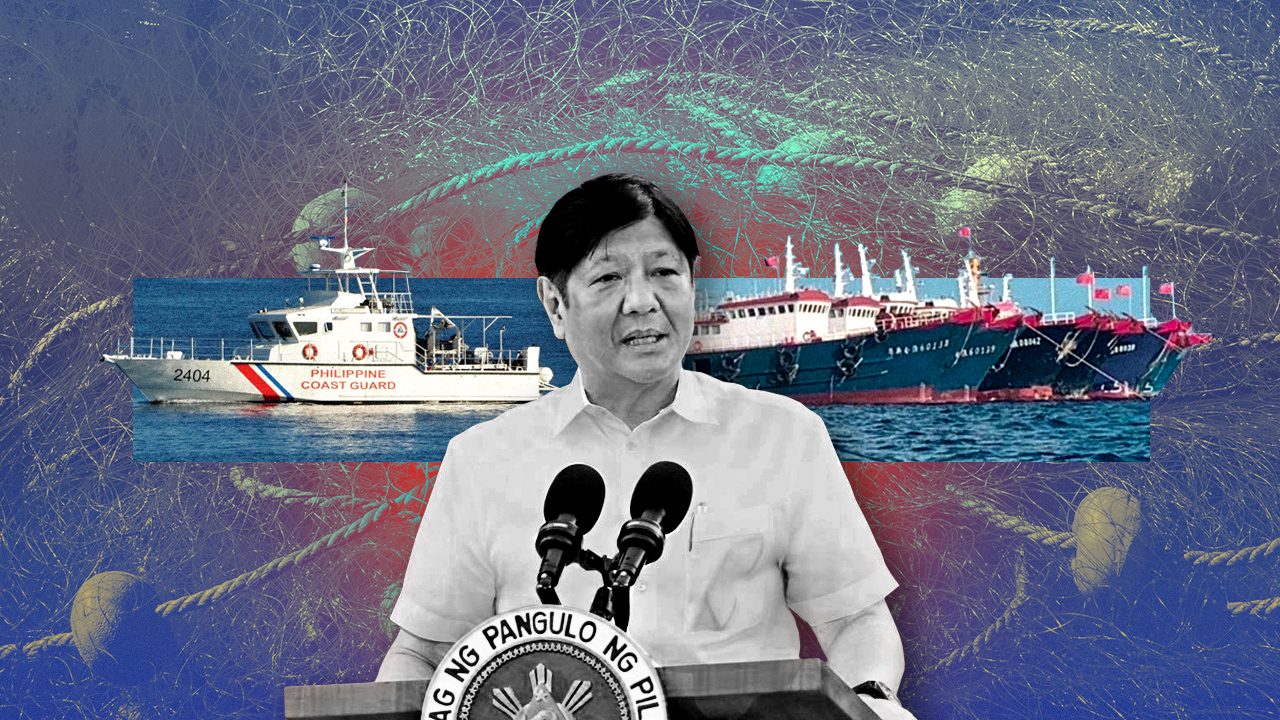
MANILA, Philippines – A reef transformed into a military outpost. A rich fishing ground seized, blocked, and continuously guarded. Filipino fisherfolk crowded out of local waters. And now, a military-grade laser aimed at a Philippine Coast Guard (PCG) vessel, blinding temporarily, personnel stationed at its bridge.
The series of actions taken by China have illustrated Beijing’s efforts to assert control in waters of the West Philippine Sea, slowly altering the seascape by might in recent years.
While the Philippines flip-flopped on its response over the better half of the last decade, a new government at the helm in Manila is seeking to reshape the playing field.
Unlike his predecessor, President Ferdinand Marcos Jr. has placed the country’s maritime dispute with China as a priority in his foreign policy, shoring up diplomatic and security ties with the country’s allies as part of efforts to respond to China’s growing incursions in Philippine waters.
In the last eight months alone, Philippine officials have prioritized strengthening international partnerships to bolster the country’s posture in its waters – expanding security ties with countries like the United States, Japan, and Australia, while rallying international support for its position.
The concerted pushback against China, implemented by officials in the foreign affairs and defense establishments, was one rarely seen during the previous Duterte government. Preferring to forge warmer ties with China, former president Rodrigo Duterte largely chose not to press on the country’s maritime dispute with Beijing – a strategy that saw the Philippines lose ground in the waterway.
Six years later, the costs of opting for warmer ties with China are now unraveling for Marcos and his administration, with the sea dispute taking stage as one of the foremost issues of his presidency.
Creeping line
Ongoing for years, Filipinos were once again reminded of China’s growing aggression in the South China Sea, after a China Coast Guard (CCG) vessel used a military-grade laser against the BRP Malapascua near Ayungin Shoal. The February 6 incident saw crew of the PCG ship momentarily blinded while providing support for a Philippine Navy resupply mission.
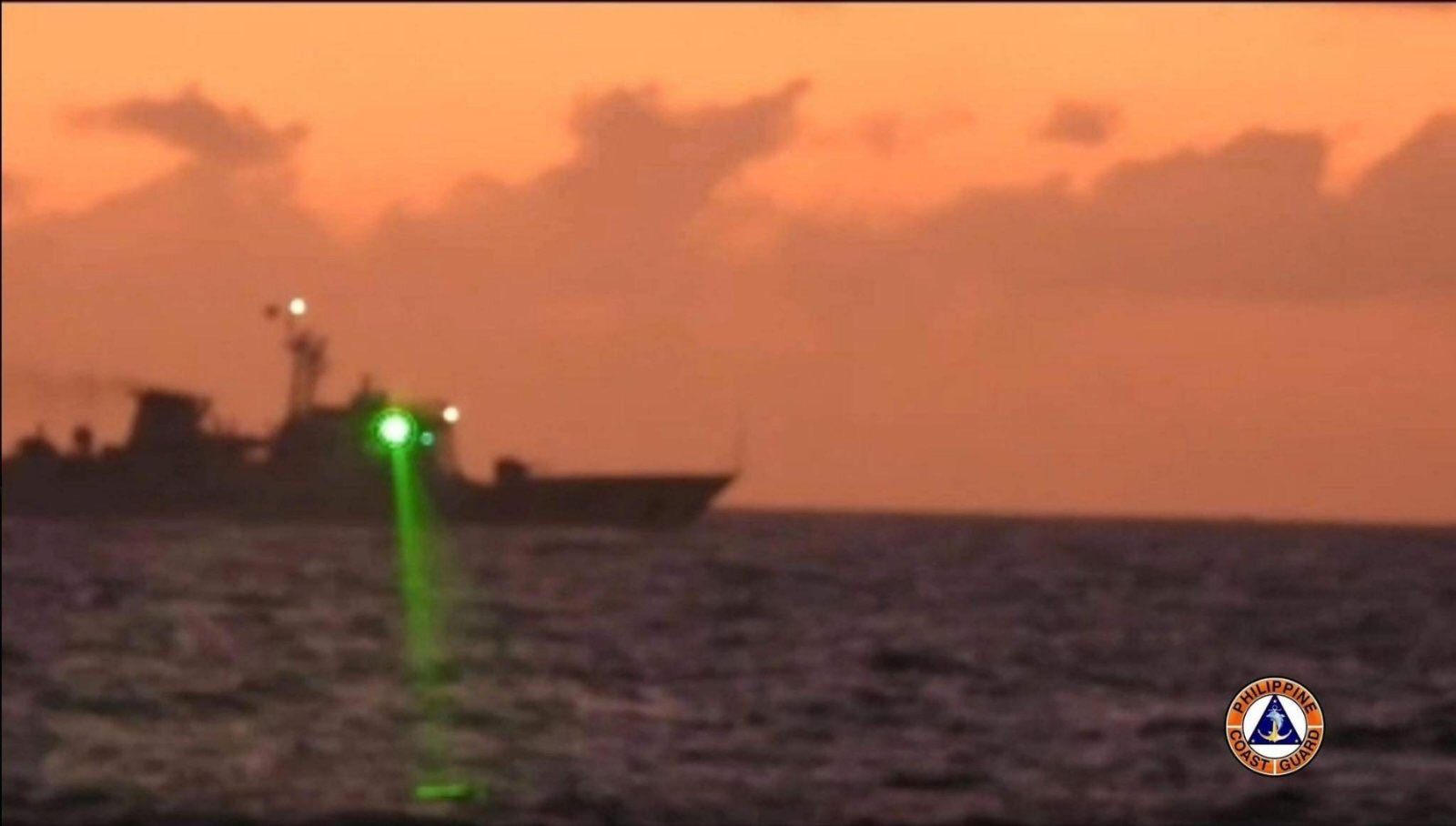
Although it was not the first time China had used a laser against the Philippines, PCG Spokesperson for the West Philippine Sea Commodore Jay Tarriela said there was high risk of an accident occurring during the incident.
“They came as close as 150 yards and majority of the people at the bridge experienced temporary blindness. Obviously, it would affect the operational capability of our crew to man their respective controlling stations,” Tarriela said in an interview.
Prior to the latest incident involving the PCG, other known instances where Beijing had deployed lasers against other countries at sea included one in 2020 when China fired a military grade laser at a US surveillance aircraft over the Pacific Ocean. This was followed on 2022, when Australia said a Chinese Navy vessel shone a laser at one of its Air Force planes over the Arafura Sea.
While it had been China’s military that made use of lasers in both situations, the incident with the Philippines, involved the CCG. For Collin Koh, a research fellow at the Institute of Defence and Strategic Studies in Singapore, the incident makes for a “disturbing” development.
“This incident is significant in the light that this means there is a sort of creeping line toward China using more drastic force going forward,” Koh said in an interview.
Unlike other countries’ coast guards, China has allowed the CCG to not only conduct law enforcement activities, but also carry out defense operations. Passed in 2021, Beijing’s coast guard law authorized CCG ships to use “all necessary means” to stop or prevent threats from foreign vessels.
“That shows the Chinese side will keep escalating their measures when it comes to law enforcement or sovereignty and rights assertion in the South China Sea,” Koh said.
The Philippines recognized this much. Shortly before it came into effect, former Philippine foreign secretary Teodoro Locsin Jr. protested the passage of the law, likening it to a “verbal threat of war” against countries that defied it.
In the same vein, China’s use of a laser against the PCG cannot be considered benign, Koh said.
Mindful of avoiding conflict, Philippine officials have initiated the process of crafting a response to similar incidents in the future. Up until the recent incident with the BRP Malapascua, the PCG did not have the use of laser technology in its rules of force, which meant that its personnel were not yet trained on how to properly respond to the threat.
Tarriela said the PCG was in the process of crafting a standard response, which will later be approved by the National Task Force for the West Philippine Sea (NTF-WPS).
According to former Supreme Court senior associate justice Antonio Carpio, the Philippines should make clear how it would view similar incidents should they take place again in the future.
“The fact that China later said that they used non-military grade laser was an opening for us to say that henceforth the use of military grade laser would be deemed an armed attack if it blinds our personnel or disables the ship’s electronics,” Carpio said.
Equal rights
In countering China, the Marcos administration has so far banked on raising the Philippines’ landmark arbitral award and focusing international attention on the issue to advance its position in the West Philippine Sea.
Experts consider the approach to be significant, considering that international law favored the Philippines’ side.
“We have to use the rule of law because the law – as embodied in UNCLOS [United Nations Convention on the Law of the Sea] and the UN Charter – is on our side, it is a peaceful means resolving the conflict, and it disregards the asymmetry in arms, providing a level playing field,” Carpio said.
The response is also one that the Philippines has long been urged to take up while it worked to strengthen its maritime presence in its waters. Stanislaw Pawlak, a judge at the International Tribunal for the Law of the Sea, earlier stressed that the rule of law made all countries equal.
Pawlak said in an 2016 Rappler Talk: “This is a fact of life, you cannot change this, but if you are tall and I am short, it does not mean we are not equal. It is the same with countries. This is not a question of how big you are, how strong you are – it is a question of you have the same rights as I have.”
Neglected by Duterte, the approach was one Marcos and his officials have been quick to take up.
Shortly after winning the presidency, Marcos vowed to uphold the 2016 Hague ruling, saying what Filipinos had in the West Philippine Sea was not a claim, but “already a right.”
Following this, Foreign Secretary Enrique Manalo declared that the arbitral award, along with UNCLOS, would stand as twin anchors of the country’s policy on the issue.
In responding to the laser incident, Marcos likewise made the rare move of summoning Huang Xilian, China’s envoy, to express “serious concern” over the “increasing frequency and intensity” of China’s actions against Filipinos.
Marcos told Huang: “If we are such close friends such as China and the Philippines, these are not the kind of incidents that we should be talking about.”
Coupled with Marcos’ amped up rhetoric was the Department of Foreign Affairs’ (DFA) push to rally support and foster awareness of the Philippines’ position in the South China Sea.
In protesting the laser incident, the DFA had also highlighted the split in China’s words and actions. For relations to move forward, DFA Spokesperson Ma. Teresita Daza said China’s approach to the issue should be based on “facts and goodwill.”
“There has to be some congruence so that our relations can actually move forward,” Daza said on the government’s Laging Handa briefing. “We want to be friends…but this…should not in any way sacrifice the national interest of the country.”
In the Munich Secrurity Conference held just days after the PCG disclosed details of the laser incident, Manalo also highlighted to an audience of world leaders that Chinese harassment was occurring on a “day-to-day basis” in the West Philippine Sea.
And as a result, he said, the Philippines was deprived of using its own exclusive economic zone.
Manalo added: “Our hope is that the international community, in the context of affirming the need for a rules-based order, would understand our position and support not only the Philippines, but other countries in ensuring that we have adherence to a rules-based order in the South China Sea.”
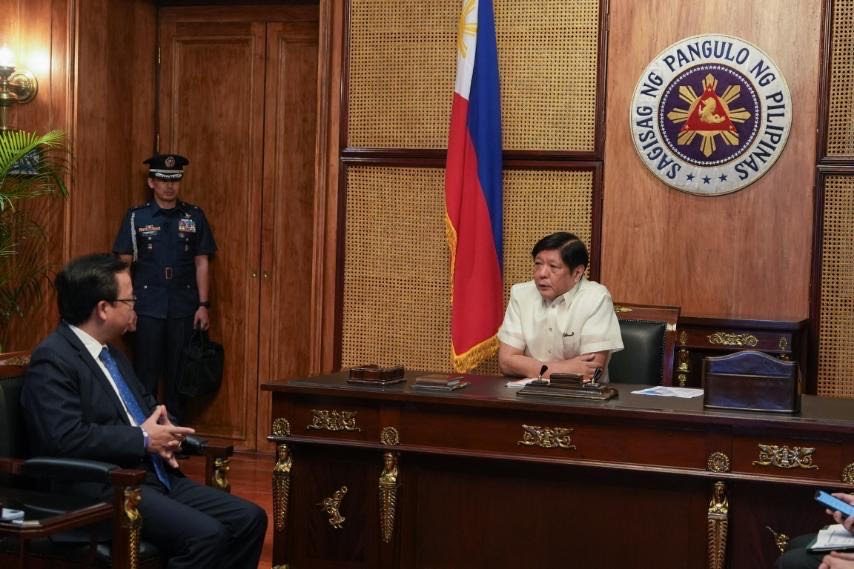
High ground
By resting on international law, experts say the Philippines occupied the moral high ground on the issue – one of the few advantages it has in the dispute.
These developments have allowed other nations to follow suit, with the US, Japan, Germany, Australia, Canada, United Kingdom, and Denmark among countries that have called on China to abide by the 2016 arbitral award.
Compared to Duterte, former foreign secretary Albert del Rosario said Marcos was taking the “proper steps” in defending the country’s rights in its waters.
“Given what is at stake, we should no longer think twice at firmly pushing back against aggression, like what is being displayed by China and Russia,” Del Rosario said.
The DFA’s diplomatic push was likewise complemented by the NTF-WPS’ commitment to publicize China’s aggression in the area through the PCG.
Ray Powell, a retired US Air Force officer, welcomed the approach, saying it would place repetitional costs on China’s growing incursions while strengthening the Philippines’ position and rule of law in the South China Sea.
“The Philippines and its neighbors and the world can become more resilient as the things that happen in the gray zone come to light,” said Powell, who leads Project Myoushu (South China Sea) at the Gordian Knot Center for National Security Innovation in Stanford University.
“China hides behind the gray zone because things that happen in the gray zone are by nature opaque and deniable.”
Strengthening defense ties
The Marcos administration’s push to bolster international support was also made tangible in efforts to expand the country’s security ties with key allies.
Since Marcos took office in June last year, the Philippines has expanded a key military deal with the US that would allow American forces to access additional military sites in the country. Under the Enhanced Defense Cooperation Agreement (EDCA), US troops will be able to access a total of nine sites, with at least three new locations in Northern Luzon and Palawan – areas near Taiwan and the South China Sea.
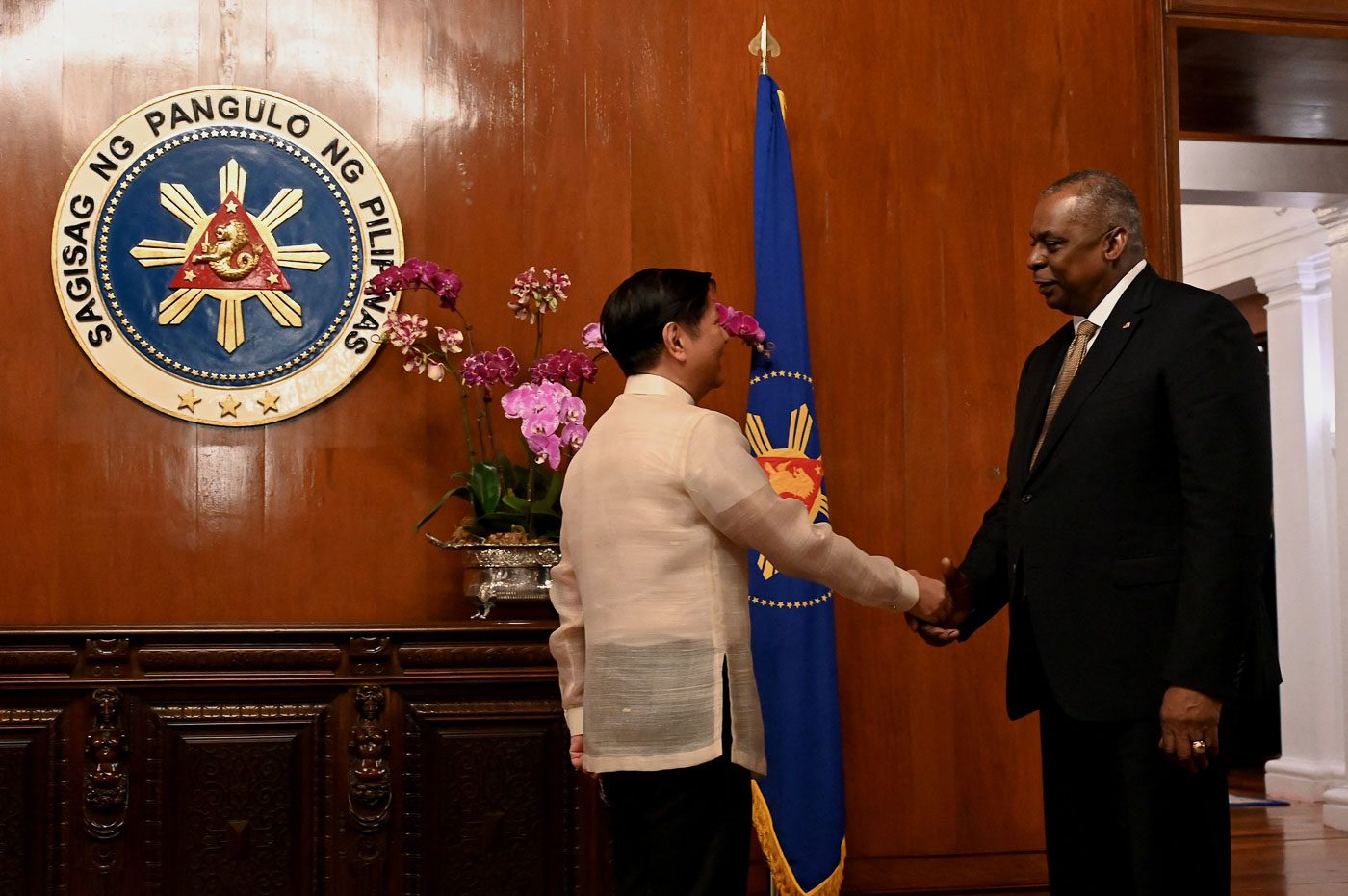
The country is also in talks with Japan on a potential reciprocal access agreement that would allow the Japanese military access to the country’s military bases. Following an official visit to Japan in early February, Marcos had said he was open to such an agreement “if it will be of help to the Philippines in terms of protecting our fishermen, protecting our maritime territory.”
Already, observers viewed the countries’ terms of references on the conduct of humanitarian assistance and disaster relief activities as a precursor to a military access agreement, with the deal paving the way for joint exercises and drills between the countries’ forces.
In addition to this, the Philippines is also considering joint patrols with the US, Japan, and Australia in the West Philippine Sea. Previously halted under Duterte, joint patrols between Manila and Washington were expected to resume in the near future with officials from both countries in advanced stages of talks.
Similarly, the Philippines and US were expected to hold their largest joint military drills since 2015, with the annual Balikatan or “shoulder-to-shoulder” exercises involving more than the previous year’s 8,900 troops. A separate set of exercises, Salaknib, will also be held in two phases and will involve nearly 3,000 troops – bigger than its 2,220 contingent in 2022.
Among drills expected during Salaknib exercises is the High-Mobility Artillery Rocket System (HI-MARS) live fire with both American and Filipino troops participating.
According to Charmaine Willoughby, a trustee of the Foundation for National Interest, China was the “strongest motivating factor” behind the domestic and international push to shore up defense and diplomatic ties in the region.
“Considering China’s continued efforts in the West Philippine Sea and the potential conflagration in Taiwan, not to mention the parallelisms between China and Russia after the invasion of Ukraine, it makes sense why the international community has the Indo-Pacific in its sites,” Willoughby said.
Modernization push
But along with reaping gains in the country’s security partnerships, observers said Marcos should also focus on modernization efforts in the PCG and military.
“Diplomacy cannot exist on its own. Diplomacy has to be backstopped by certain military power…. Only then will the conduct of diplomacy work to everyone’s favor,” Koh said.
To boost the PCG’s capabilities, Tarriela said the agency needed “more than 20” more vessels to strengthen its patrols in Philippine waters. Currently, the PCG only has 10 44-meter vessels and three offshore patrol vessels, which are capable of patrolling the country’s waters for some 7-10 days.
On top of this, Tarriela said responses bases were also necessary to shorten response time to incidents and protect commercial shipping lines in Philippine waters. “The PCG is pretty much dependent on spaces provided by the PPA (Philippine Ports Authority),” he said.
Faced with external threats, the Philippine Navy also earlier said it was looking to purchase 25 to 30 more warships before 2029.
For the Army, among weapons acquired in recent years are an Autonomous Truck Mounted Howitzer System (ATMOS 2000) 155mm self-propelled guns, multi-launch rocket systems, and land-based missile systems.
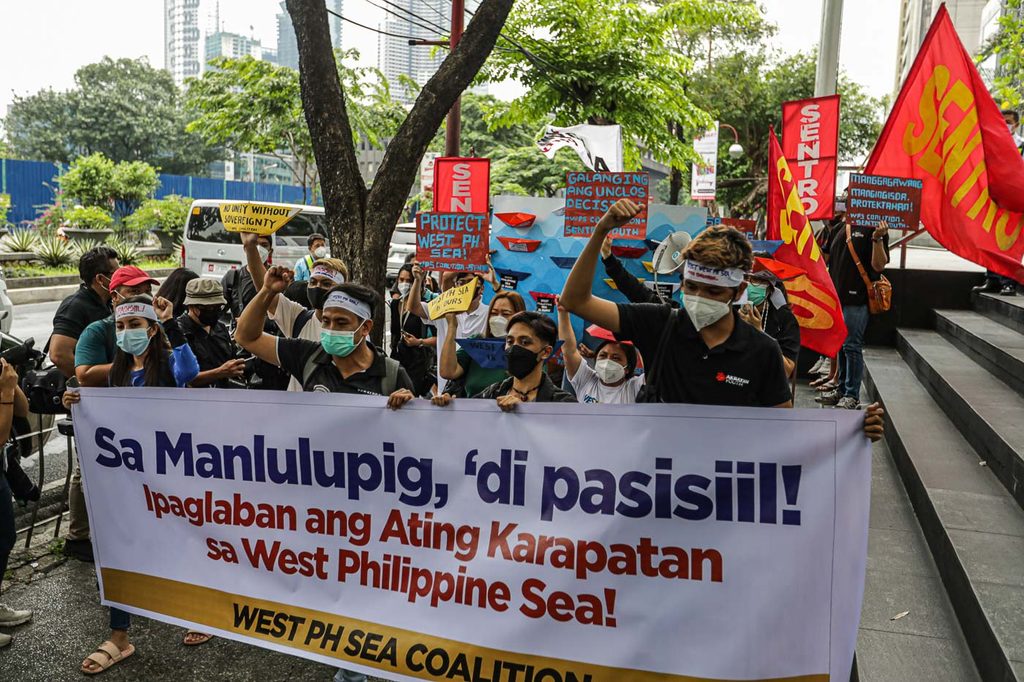
Fight for identity
In a speech before troops on Monday, February 27, Marcos himself underscored the urgency of having the military shift its focus to defending Philippine territory.
“We are facing a more complex foreign situation in the Philippines,” Marcos said, citing the South China Sea dispute as one of the “most difficult” geopolitical issues in the world.
“That’s why I’m saying your mission in the AFP has changed,” he said. “Things have begun to change and we must adjust accordingly.”
In defending the West Philippine Sea, Manila’s response so far has offered some lessons. Among these, Powell said, was that Filipinos should continue efforts to expose China’s actions in the South China Sea.
“Hopefully one of the lessons that the Philippines learns from this lazing incident is, when we do go public, look at all the friends who show up and say we support the Philippines,” he said.
It’s also worth Manila’s efforts to continue focusing international attention on the issue, Koh said, adding that as a major trade route, “the [South China Sea] is not a closed lake owned by somebody. This is an area where international interests are at stake.”
Closer to home, a fight for the West Philippine Sea stands as a fight for identity.
One Navy officer said: “Bansa natin ‘yan eh. Hindi naman natin papayagan na ma-bu-bully tayo di ba?” (It’s our country. Surely we won’t allow ourselves to be bullied.) – Rappler.com
Add a comment
How does this make you feel?
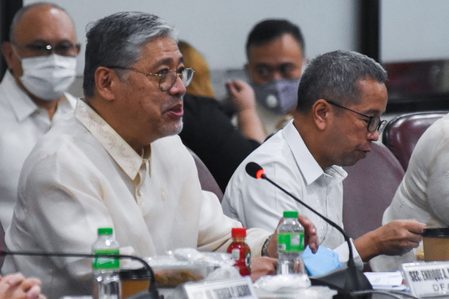










![[In This Economy] Marcos’ POGO ban is popular, but will it work?](https://www.rappler.com/tachyon/2024/07/thought-leaders-marcos-pogo-ban.jpg?resize=257%2C257&crop=255px%2C0px%2C720px%2C720px)
![[Rappler Investigates] POGOs no-go as Typhoon Carina exits](https://www.rappler.com/tachyon/2024/07/newsletter-graphics-carina-pogo.jpg?resize=257%2C257&crop=424px%2C0px%2C1080px%2C1080px)





![[Just Saying] SONA 2024: Some disturbing points](https://www.rappler.com/tachyon/2024/07/TL-marcos-sona-points-july-23-2024.jpg?resize=257%2C257&crop=335px%2C0px%2C720px%2C720px)






There are no comments yet. Add your comment to start the conversation.